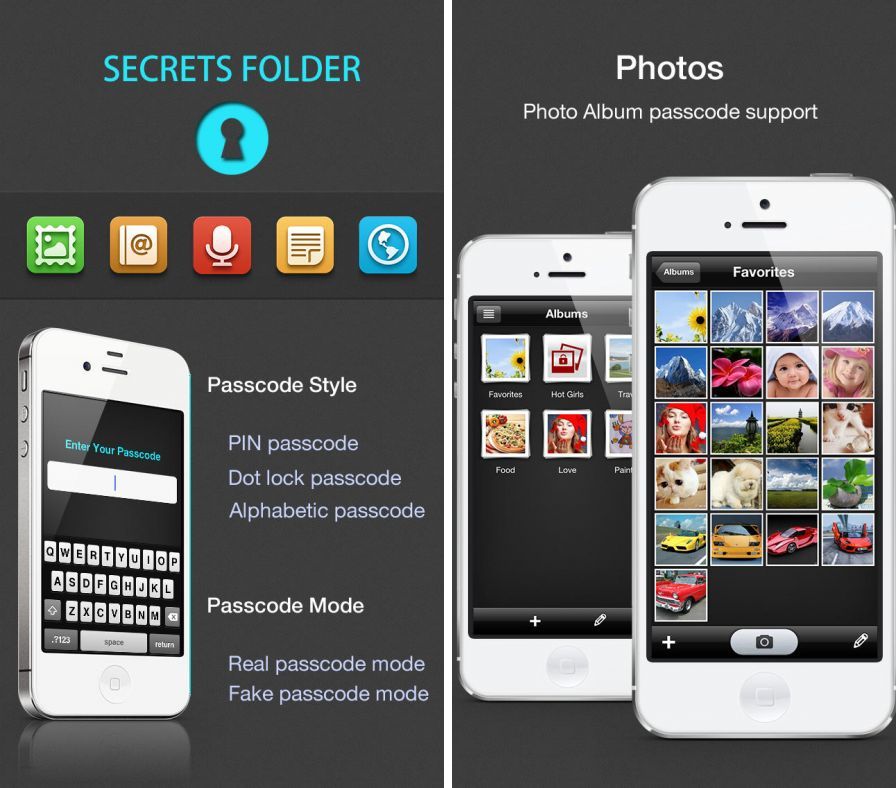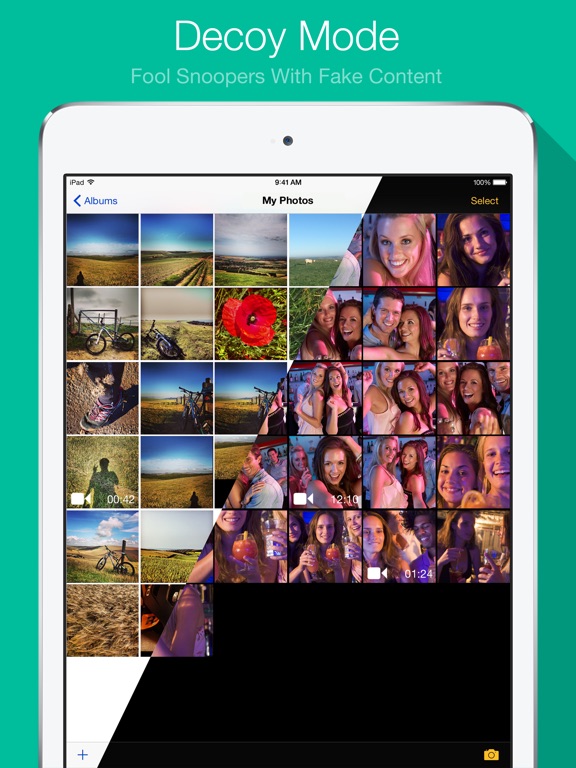

- #Create a secret folder on iphone how to#
- #Create a secret folder on iphone pro#
- #Create a secret folder on iphone password#
#Create a secret folder on iphone pro#
Pro tip: download the DuckDuckGo search engine and use it instead. To clear your entire browser history, go back to your phone’s home screen, tap Settings > Safari > Clear History and Website Data. If you just want to browse privately for a while, open Safari, tap the page icon in the lower right corner, then tap Private.
#Create a secret folder on iphone how to#
Get a detailed explanation for how to do both tricks here. Second, you can hide app icons altogether by dragging them into the dock, then using Spotlight to access it. First, you can hide apps inside another folder like your “Extras” by holding down the app icon until it starts shaking, then dragging it into the desired folder. Just remember to permanently delete the originals from the default iPhone photo app afterwards.ĭon’t want anyone who borrows your phone to know you’re on Tinder or have a Private Photo Vault? There are two ways around this.

It’s a versatile app to lock photos on the iPhone with various security options. GalleryVault is one of the best secret folder apps for iPhone, allowing users to hide their photos and videos behind a passcode, pattern, or Touch ID/Face ID.
#Create a secret folder on iphone password#
Instead, try a free app like KYMS or Private Photo Vault, which require a password to access. Availability: Available at the App Store. While you can hide any photo from your camera roll by holding your finger on it, then selecting Hide, the Hidden Album is not password-protected. Removed part that called out other replies which were incorrect or not applicable.Here’s one case when you’re better off using a third-party app instead of the iPhone’s built-in option. So technically speaking, you can access a hidden folder using Files.app, the "Recently Deleted"/".Trash" folder.Įdit: Rewrote comment. Trash in the root of "On this iPad"/"On this iPhone", which is the location where items from the aforementioned location are moved to when "deleted" using the Files.app. As mentioned above, programs will usually omit hidden items by default, as such it may be necessary to explicitly show them, for instance by adding the -a option to ls ( ls -a) in a-Shell.ġ One example for a hidden folder that is used by the system is. However, this restriction is enforced by the Files.app "frontend", and not by some underlying mechanism, as such it is possible to use third party apps like Textastic and a-Shell, which can obtain "direct" access to a folder via the i(Pad)OS Folder picker, to see and modify these hidden items. The Files.app implements restrictions on handling hidden items it is not possible to see or otherwise interact with them, and creating or renaming an item to begin with a dot yields an error that " these names are reserved for the system" 1. Apps can access the underlying location after being given permission via the folder picker.

app internal storage, operating system files) are out of scope for this topic.įurthermore, there is a distinction to be made between the Files app ( Files.app) and the actual file locations, like "On this iPad"/"On this iPhone" and locations exposed by apps such as cloud storage providers. Items hidden in the sense of not being in a location accessible via the "Files" app (i.e. Programs typically omit these files by default when listing the contents of a location. Note: For the purposes of this response, "hidden" files and folders are items which have their name prefixed by a dot, i.e.myfile, a common example is the.


 0 kommentar(er)
0 kommentar(er)
